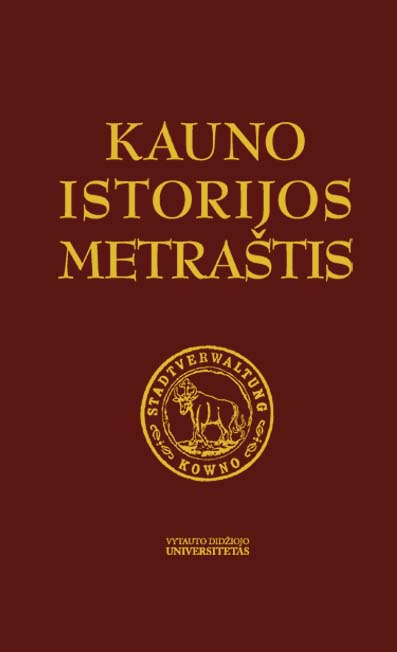Kauno viešųjų erdvių sovietizavimas 1940–1941 m.
Sovietization of Public Spaces in Kaunas in 1940–1941
Author(s): Mantvydas LugovojusSubject(s): History, Cultural history, Social history, WW II and following years (1940 - 1949), History of Communism
Published by: Vytauto Didžiojo Universitetas
Keywords: Kaunas; Public spaces; Urban planning; Signs of power; Soviet festivals;
Summary/Abstract: The present article analyses the adaptation of spaces of the Kaunas city to the new ideology during the years of the first Soviet occupation. It discusses the most important urban reconstruction ideas and their implementation as well as the relationship with the urban development tradition of the Soviet Union. During the Soviet occupation in 1940–1941, symbolic and decorative transformations of city spaces exceeded the fundamental ones. There was not much construction, and the projects initiated in independent Lithuania were continued. The construction was followed by the articles in press, which emphasized the ideological meaning of changes in the city. Kaunas was depicted as a place for the workers’ hegemony and the symbol of the new life. City spaces were decorated by abundant signs of the Soviet authority in a short time. One of the most significant phenomena was changes in its toponymy. Decorative changes of city spaces were particularly apparent during the state festivals. The Soviet authorities introduced the new calendar of festivals and new rituals. There were large-scale celebrations to commemorate the October Revolution and May 1. The aim of the festivals was to consolidate society and to demonstrate power of the new authorities. This was expressed by organizing the Red Army parades. An important aspect of the celebrations was creation of an image of a new Soviet person. Soviet festivals in Kaunas in 1940–1941 were well-organized and large-scale events, in which the historical system of Kaunas public spaces was used, displaying new symbolism of the Soviet authorities. References to Soviet festivals in ego-documents confirm that they should be considered as an important feature of the period.
Journal: Kauno istorijos metraštis
- Issue Year: 2016
- Issue No: 16
- Page Range: 333-347
- Page Count: 15
- Language: Lithuanian

